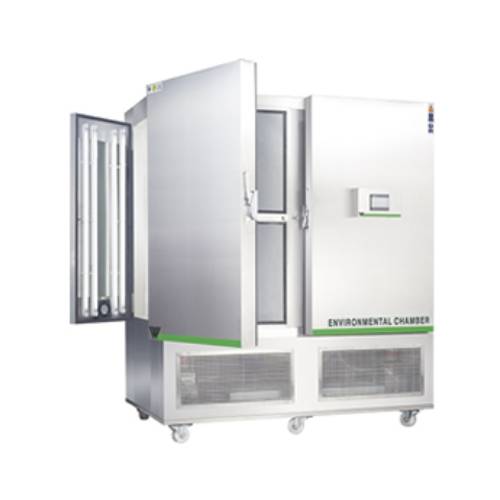Environment Test Chamber Manufacturer & Supplier in India
An Environment Test Chamber is a sophisticated testing apparatus designed to simulate and control a wide range of environmental conditions for evaluating the performance, durability, and reliability of various materials, products, and components. These chambers are widely used across industries such as electronics, automotive, aerospace, pharmaceuticals, and construction to ensure that products meet quality standards and can withstand real-world conditions. By replicating extreme or specific environmental scenarios, environmental test chambers play a critical role in product development and quality assurance.
Equipped with advanced control systems, environment test chambers can simulate conditions such as extreme temperatures (hot and cold), humidity, altitude, vibration, and even exposure to corrosive gases or UV light. The chambers are designed with programmable features that allow for the creation of complex testing cycles, replicating conditions like rapid temperature changes, prolonged exposure to heat or cold, and high-humidity environments. These capabilities enable manufacturers to assess the effects of environmental stress on their products.
Applications of environmental test chambers include testing the durability of electronic components under extreme heat, ensuring automotive parts function properly in sub-zero temperatures, or evaluating the stability of pharmaceutical products under specific humidity levels. They are also essential in materials testing, allowing researchers to study the impact of environmental factors on the integrity, safety, and lifespan of various materials.
Uses, Types, and Testing of Environmental Test Chambers
Environmental test chambers are used to replicate extreme conditions such as temperature, humidity, vibration, altitude, and more. Common applications include:
- Product Reliability Testing: Simulate long-term exposure to harsh environments to predict product lifespan.
- Quality Assurance & Compliance: Ensure products meet international standards like ISO, ASTM, MIL-STD, and IEC.
- Research & Development: Accelerate innovation by testing prototypes under controlled conditions.
- Failure Analysis: Identify weaknesses or defects by pushing products to their limits.
- Packaging & Transportation Simulation: Assess how goods withstand shipping, storage, and handling.
Types of Environmental Test Chambers
- Temperature Chambers: Simulate extreme hot or cold conditions.
- Altitude Chambers: Mimic high-altitude conditions for aerospace and defense applications.
- Stability Chambers: Used in pharma and food industries for shelf-life and stability testing.
Testing Procedures & Standards
Environmental testing follows rigorous protocols to ensure accuracy and repeatability. Key aspects include:
- Test Planning: Define objectives, conditions, duration, and standards to be followed.
- Calibration & Validation: Ensure chamber sensors and controls are accurately calibrated.
- Monitoring & Data Logging: Real-time tracking of temperature, humidity, pressure, etc., with automated logging.
Environmental testing is not just about compliance—it's about building trust. Products that survive rigorous testing are more likely to perform reliably in the real world, reducing recalls, enhancing brand reputation, and ensuring customer satisfaction.




